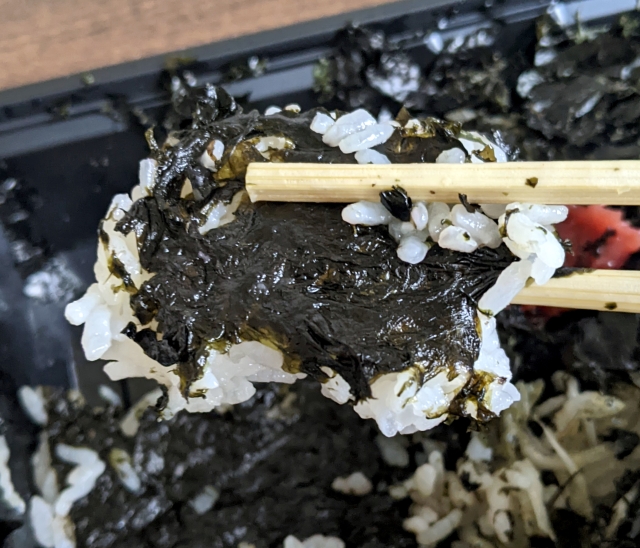
Mr. Sato tries the ultimate in luxurious noriben and equates it to a microcosm of the universe.
Yamamotoyama is a Japanese tea merchant that also sells ultra-premium nori seaweed and select sweet treats. When our intrepid Japanese-language reporter Mr. Sato caught wind that they sell a nori bento (“noriben”) that makes use of top-grade nori, he was insatiably curious. After all, you probably know what you’re doing if your shop has been around since 1690!
For reference, a noriben is usually a simple bento with rice and seaweed being the core components, although it’s often sold with fried fish or a couple of veggies included on top as well. It’s an affordable alternative to a bento filled with meat or seafood products as the main ingredients, similar in that way to a hinomaru bento, which is essentially a dish of rice with a single umeboshi pickled plum in the center to echo the design of Japan’s rising sun flag, which is known as “hinomaru” in Japan.
▼ This is Nagomi no Yoneya’s high-quality hinomaru bento that Mr. Sato purchased last year in Shinjuku’s Isetan department store which still only set him back 648 yen (US$4.48).
Therefore, the prospect of an “ultimate” noriben was very intriguing. Just how could something so seemingly simple be turned into a luxury product? To satisfy his mind and stomach, Mr. Sato headed to the Nihonbashi Takashimaya Mitsui Building in Tokyo’s Nihonbashi district, where Yamamotoyama operates the Fujie Tearoom that sells the super special noriben.
Dine-in at the tearoom is conducted with a 100-percent reservation policy and bento can be purchased for takeout also on a kind of staggered schedule. Mr. Sato didn’t know this system ahead of time, so he ordered in person and was instructed to pick it up 30 minutes later. He recommends calling ahead if you’d like to get a bento to go.
Importantly, there are three types of takeout noriben to choose from:
The beef sukiyaki noriben and salmon noriben are priced at 2,000 yen and 1,600 yen respectively. That’s a bit steep, but Mr. Sato didn’t think it was strange since Yamamotoyama is such a well-established shop.
However delicious those two sounded, he only had eyes for the third type, called the Nihonbashi noriben, which makes use of the ultra-premium nori.
At 2,200 yen, it’s even more expensive than the meat or fish versions–and doesn’t even come with any side dishes!
On top of that, in an effort to keep things as fresh as possible, staff instructed him at pick-up that the noriben is supposed to be consumed within four hours of purchase. Mr. Sato received his food at 12:30 p.m., so he had until 4:30 p.m. to eat it all up.
With that knowledge, he rushed home to dig in as soon as he could. The bento box itself was simple but elegantly tied together with string.
What would be waiting for him under the lid?
He saw a peek of something dark and crinkly looking…
…aha! It was a layer of dark, shining nori!
Its texture was hard to see through his camera from directly above, so he tried taking a photo from an angle to show more depth.
Nestled in the center of the nori ocean was another delicacy–an umeboshi (pickled plum) from the famous plum-producing Kishu region of Wakayama Prefecture. Mr. Sato was suddenly overcome by a strange poetic feeling and could only equate the visual to a lone star shining with all of its might in the cosmos, trying not to be gobbled up by the encroaching darkness. He allowed the metaphor to run wild in his mind for a moment and almost had to wipe away a tear at its beauty.
Okay, now on to the food itself. The noriben came with an illustration of its cross-section describing its contents. Even the minimalist diagram was beautiful in its simplicity.
The surface was a layer of crumbled “Nihonbashi” nori. This is the cream of the crop when it comes to nori, so Mr. Sato was brimming with excitement as he sunk his teeth into a bite of it. He had truly never eaten any seaweed with such a surprisingly chewy texture before. Average nori has a bit of a rough and even scratchy texture, but this stuff was soft and had a deep flavor that slowly spread throughout his mouth.
They blended in well with the grains of rice, but there was also a layer of tiny fish under the nori. They added a pleasing texture that contrasted nicely with the nori and added a touch of sweetness to each bite.
Before he knew it, the bottom of the dish came into sight.
Psych! It was actually just another layer of nori, this time toasted. Under that was even more rice. He almost wanted to describe the noriben’s composition like some kind of layered pastry.
It made full sense to Mr. Sato now why this noriben didn’t need any meat, fish, or side dishes. Rather, it was correct of Yamamotoyama to not let those things anywhere near this luxurious nori! Just like a black hole, this dish had swallowed him and his taste buds up whole in happiness. Now, maybe he’d just have to also purchase some of that roasted nori cake from Yamamotoyama for dessert…
Store information
Yamamotoyama Fujie Tearoom / 山本山 ふじヱ茶房
Address: Tokyo-to, Chuo-ku, Nihonbashi 2-5-1 Nihonbashi Takashimaya Mitsui Building 1st floor
東京都中央区日本橋 2-5-1 日本橋髙島屋三井ビルディング1階
Open: 10:30 a.m.-8 p.m. (tearoom by reservation only)
Website
All images © SoraNews24
● Want to hear about SoraNews24’s latest articles as soon as they’re published? Follow us on Facebook and Twitter!
[ Read in Japanese ]

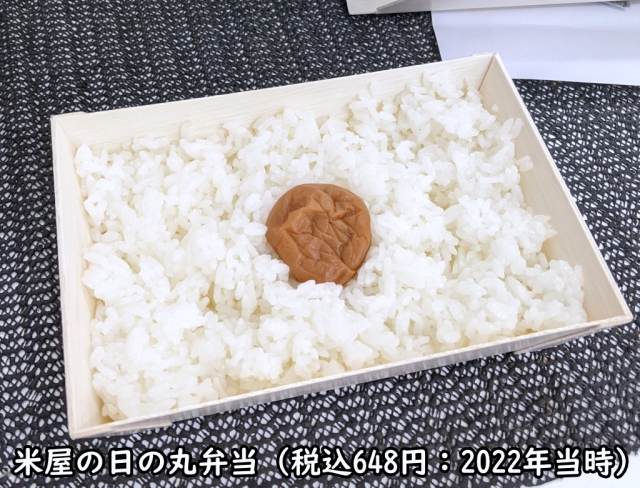
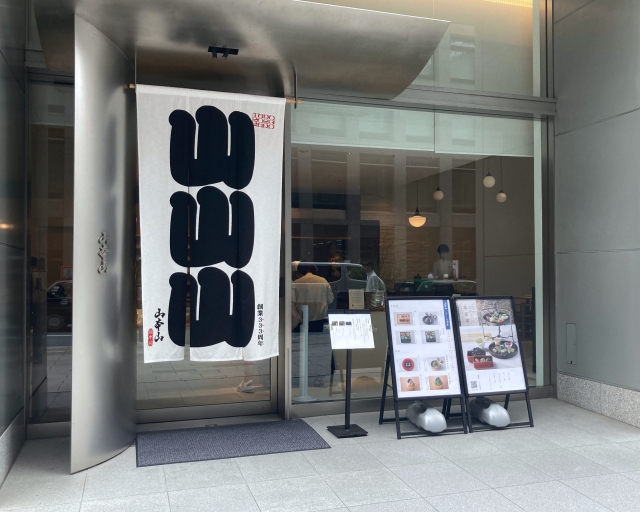
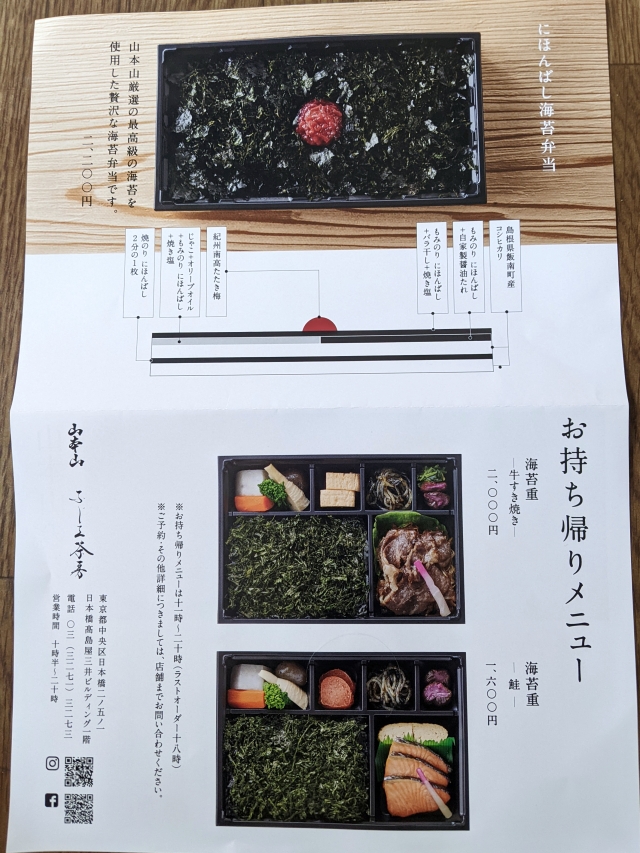
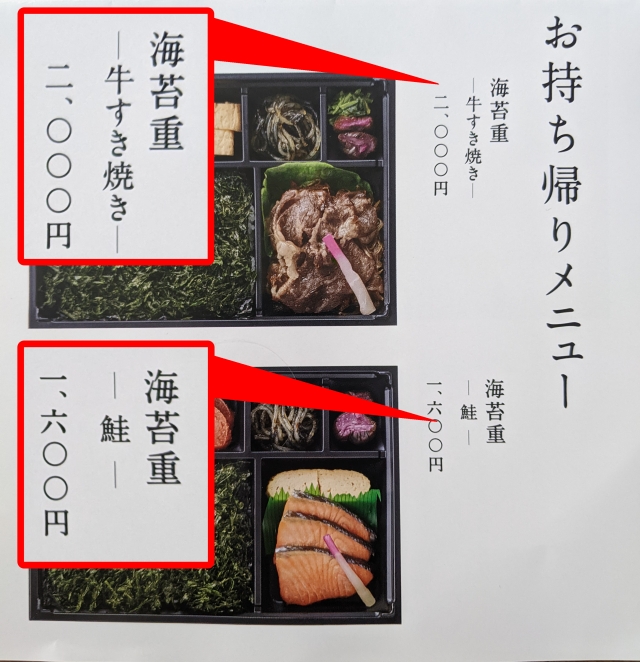

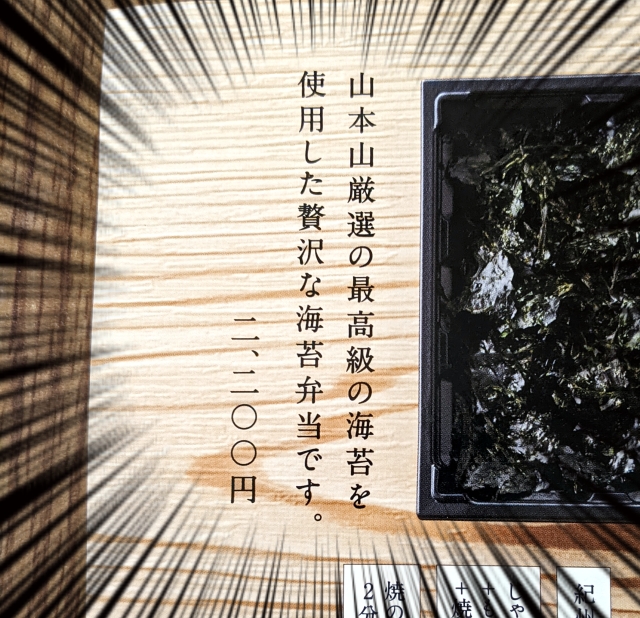
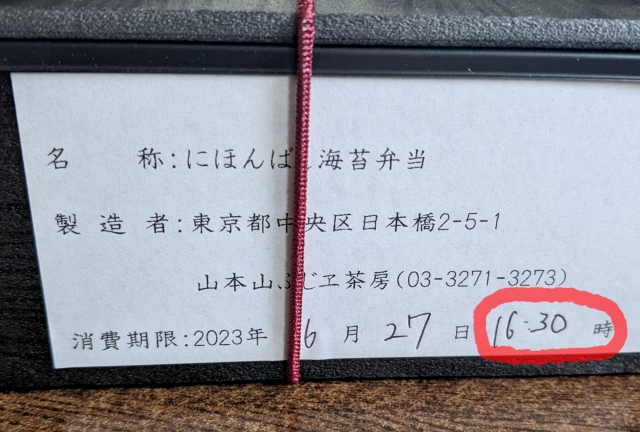

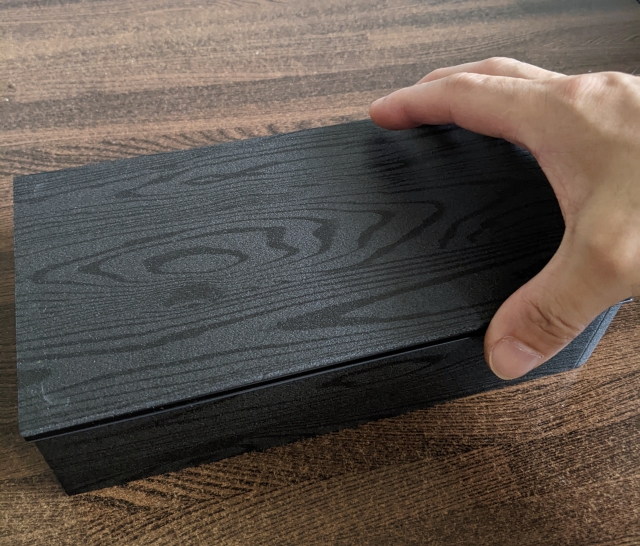
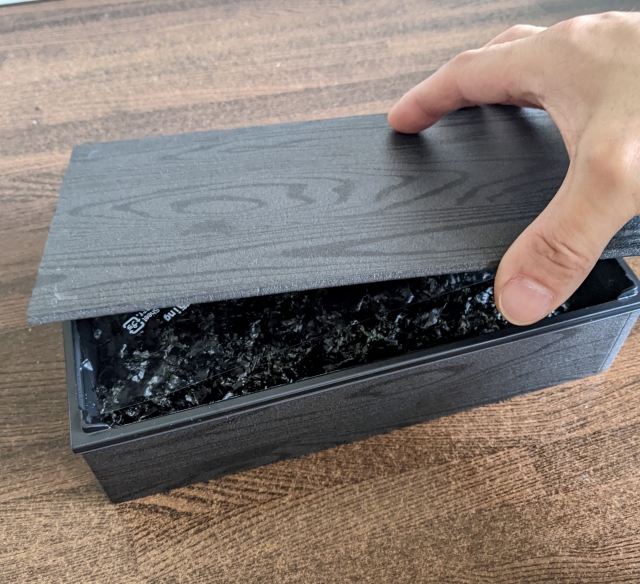
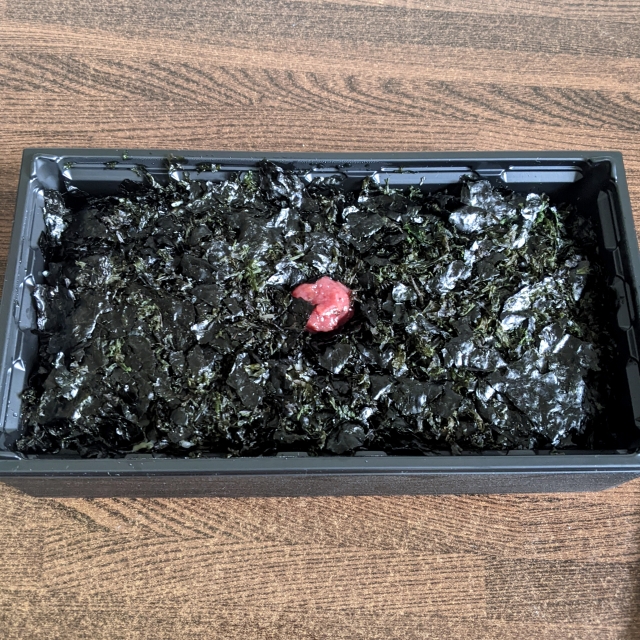
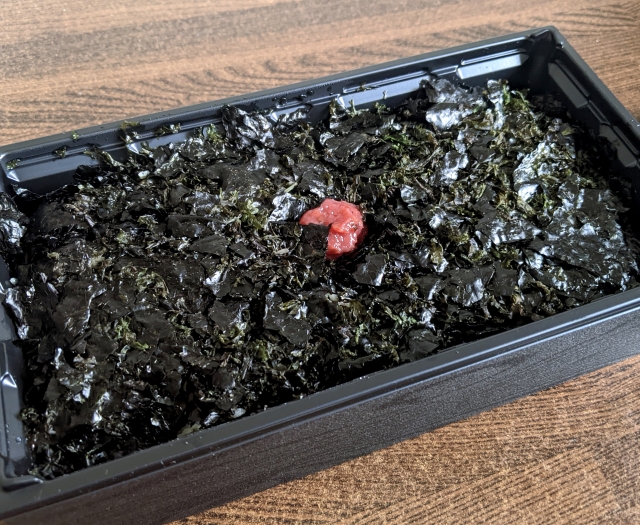
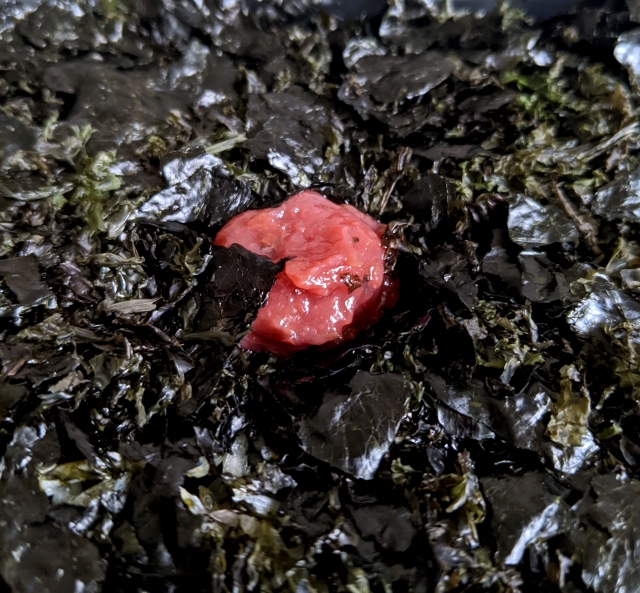
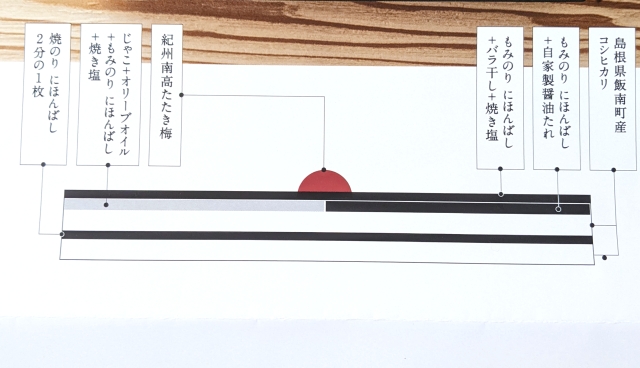
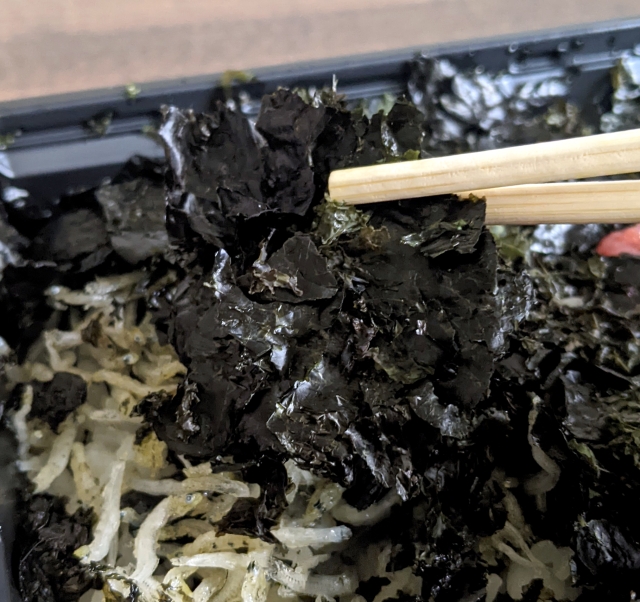
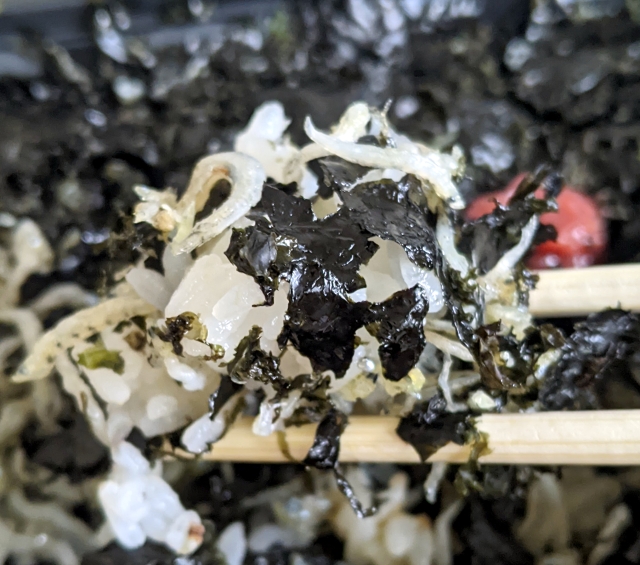
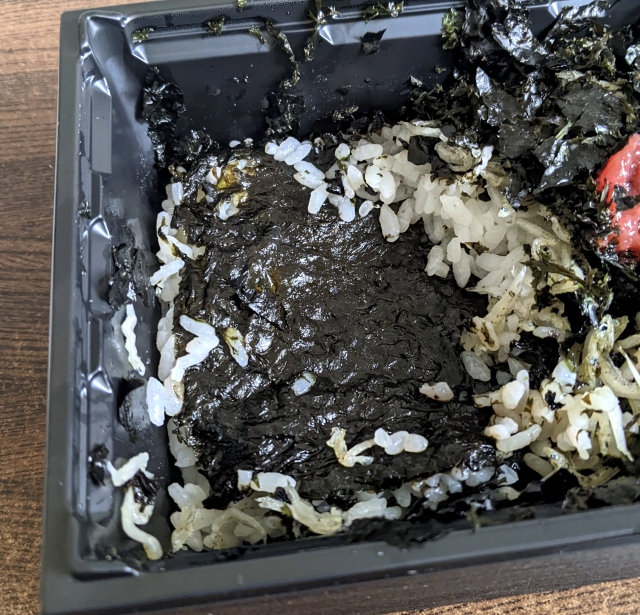
 Tokyo Noriben Dog either reinvents or tarnishes the Japanese standard by putting a bento on a bun
Tokyo Noriben Dog either reinvents or tarnishes the Japanese standard by putting a bento on a bun What do hosts in Kabukicho eat after a night of working in Tokyo’s red-light district?
What do hosts in Kabukicho eat after a night of working in Tokyo’s red-light district? The 5 best Japanese bento to buy at Kyoto Station
The 5 best Japanese bento to buy at Kyoto Station Onikun: Epic onigiri so big they’re half demon, half rice ball
Onikun: Epic onigiri so big they’re half demon, half rice ball The world’s most famous sushi restaurant sells seaweed too, so we made nori rice balls with it
The world’s most famous sushi restaurant sells seaweed too, so we made nori rice balls with it Foreigner’s request for help in Tokyo makes us sad for the state of society
Foreigner’s request for help in Tokyo makes us sad for the state of society Seaside scenery, history, and so many desserts on Yokohama’s Akai Kutsu【Japan Loop Buses】
Seaside scenery, history, and so many desserts on Yokohama’s Akai Kutsu【Japan Loop Buses】 Japanese city loses residents’ personal data, which was on paper being transported on a windy day
Japanese city loses residents’ personal data, which was on paper being transported on a windy day Should you add tartar sauce to Japanese curry rice? CoCo Ichi makes diners an unusual offer
Should you add tartar sauce to Japanese curry rice? CoCo Ichi makes diners an unusual offer Red light district sushi restaurant in Tokyo shows us just how wrong we were about it
Red light district sushi restaurant in Tokyo shows us just how wrong we were about it Historical figures get manga makeovers from artists of Spy x Family, My Hero Academia and more
Historical figures get manga makeovers from artists of Spy x Family, My Hero Academia and more Akihabara pop-up shop sells goods made by Japanese prison inmates
Akihabara pop-up shop sells goods made by Japanese prison inmates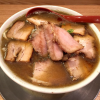 Tokyo ramen restaurant’s made-to-order noodles are only the beginning of its awesomeness
Tokyo ramen restaurant’s made-to-order noodles are only the beginning of its awesomeness Where are all the beautiful women in Japan? Survey investigates
Where are all the beautiful women in Japan? Survey investigates Japan’s massive matcha parfait weighs 6 kilos, contains hidden surprises for anyone who eats it
Japan’s massive matcha parfait weighs 6 kilos, contains hidden surprises for anyone who eats it McDonald’s new Happy Meals offer up cute and practical Sanrio lifestyle goods
McDonald’s new Happy Meals offer up cute and practical Sanrio lifestyle goods Japanese ramen restaurants under pressure from new yen banknotes
Japanese ramen restaurants under pressure from new yen banknotes French Fries Bread in Tokyo’s Shibuya becomes a hit on social media
French Fries Bread in Tokyo’s Shibuya becomes a hit on social media Studio Ghibli releases new action figures featuring Nausicaä of the Valley of the Wind characters
Studio Ghibli releases new action figures featuring Nausicaä of the Valley of the Wind characters New private rooms on Tokaido Shinkansen change the way we travel from Tokyo to Kyoto
New private rooms on Tokaido Shinkansen change the way we travel from Tokyo to Kyoto Tokyo Tsukiji fish market site to be redeveloped with 50,000-seat stadium, hotel, shopping center
Tokyo Tsukiji fish market site to be redeveloped with 50,000-seat stadium, hotel, shopping center All-you-can-drink Starbucks and amazing views part of Tokyo’s new 170 meter-high sky lounge
All-you-can-drink Starbucks and amazing views part of Tokyo’s new 170 meter-high sky lounge Beautiful Ghibli sealing wax kits let you create accessories and elegant letter decorations【Pics】
Beautiful Ghibli sealing wax kits let you create accessories and elegant letter decorations【Pics】 Studio Ghibli releases Kiki’s Delivery Service chocolate cake pouches in Japan
Studio Ghibli releases Kiki’s Delivery Service chocolate cake pouches in Japan New definition of “Japanese whiskey” goes into effect to prevent fakes from fooling overseas buyers
New definition of “Japanese whiskey” goes into effect to prevent fakes from fooling overseas buyers Our Japanese reporter visits Costco in the U.S., finds super American and very Japanese things
Our Japanese reporter visits Costco in the U.S., finds super American and very Japanese things Studio Ghibli unveils Mother’s Day gift set that captures the love in My Neighbour Totoro
Studio Ghibli unveils Mother’s Day gift set that captures the love in My Neighbour Totoro More foreign tourists than ever before in history visited Japan last month
More foreign tourists than ever before in history visited Japan last month New Pokémon cakes let you eat your way through Pikachu and all the Eevee evolutions
New Pokémon cakes let you eat your way through Pikachu and all the Eevee evolutions Sales of Japan’s most convenient train ticket/shopping payment cards suspended indefinitely
Sales of Japan’s most convenient train ticket/shopping payment cards suspended indefinitely Sold-out Studio Ghibli desktop humidifiers are back so Totoro can help you through the dry season
Sold-out Studio Ghibli desktop humidifiers are back so Totoro can help you through the dry season Japanese government to make first change to romanization spelling rules since the 1950s
Japanese government to make first change to romanization spelling rules since the 1950s Ghibli founders Toshio Suzuki and Hayao Miyazaki contribute to Japanese whisky Totoro label design
Ghibli founders Toshio Suzuki and Hayao Miyazaki contribute to Japanese whisky Totoro label design Doraemon found buried at sea as scene from 1993 anime becomes real life【Photos】
Doraemon found buried at sea as scene from 1993 anime becomes real life【Photos】 Tokyo’s most famous Starbucks is closed
Tokyo’s most famous Starbucks is closed One Piece characters’ nationalities revealed, but fans have mixed opinions
One Piece characters’ nationalities revealed, but fans have mixed opinions We asked a Uniqlo employee what four things we should buy and their suggestions didn’t disappoint
We asked a Uniqlo employee what four things we should buy and their suggestions didn’t disappoint Princesses, fruits, and blacksmiths: Study reveals the 30 most unusual family names in Japan
Princesses, fruits, and blacksmiths: Study reveals the 30 most unusual family names in Japan Taste-testing Japan’s crazy-expensive 3,240-yen (US$29) persimmon
Taste-testing Japan’s crazy-expensive 3,240-yen (US$29) persimmon Hungry and on the go? Top 10 ranking of ekiben at Tokyo’s Shinagawa Station
Hungry and on the go? Top 10 ranking of ekiben at Tokyo’s Shinagawa Station Tokyo department store’s best beef sushi bento combines two of the best things in life
Tokyo department store’s best beef sushi bento combines two of the best things in life Lawson Store 100 sells two new simple, inexpensive bento showcasing popular Japanese side dishes
Lawson Store 100 sells two new simple, inexpensive bento showcasing popular Japanese side dishes We ate a pickled tapioca bubble rice bowl and it was un-bowl-lievable
We ate a pickled tapioca bubble rice bowl and it was un-bowl-lievable Tokyo’s spicy cod roe ice cream: An unexpected dessert that tastes about like what you’d expect
Tokyo’s spicy cod roe ice cream: An unexpected dessert that tastes about like what you’d expect 2,500 yen for Tokyo ramen? High-end noodles in the high-rent Ginza district are totally worth it
2,500 yen for Tokyo ramen? High-end noodles in the high-rent Ginza district are totally worth it Sushi from a vending machine — would you try it? Mr. Sato did
Sushi from a vending machine — would you try it? Mr. Sato did We taste makunouchi bento at four Japanese convenience store chains【Taste comparison】
We taste makunouchi bento at four Japanese convenience store chains【Taste comparison】 We go to a 7-Eleven in Aomori and find a surprising “one per family” item on the shelf
We go to a 7-Eleven in Aomori and find a surprising “one per family” item on the shelf Mr. Sato attempts to conquer mountains of shaved ice at all-you-can-eat event
Mr. Sato attempts to conquer mountains of shaved ice at all-you-can-eat event Douhua, a delicious tofu pudding, is Mr. Sato’s new favourite food
Douhua, a delicious tofu pudding, is Mr. Sato’s new favourite food Three things we loved about Fujiya’s frozen sweets vending machine in Tokyo
Three things we loved about Fujiya’s frozen sweets vending machine in Tokyo Man vs. Steak: We band together to eat 4.5 kilograms of beef at Ikinari Steak
Man vs. Steak: We band together to eat 4.5 kilograms of beef at Ikinari Steak Around Japan in 47 rice balls: Mr. Sato buys each prefecture’s musubi all from one Tokyo shop
Around Japan in 47 rice balls: Mr. Sato buys each prefecture’s musubi all from one Tokyo shop
Leave a Reply